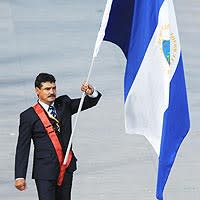Arguello's life a profile in courage
Gary Smith of Sports Illustrated has long been one of my favorite writers. He writes on just about any sports topic better than anyone else.
When Smith would tackle boxing, it was always a special treat because he could paint a portrait of a man few others could.
So when I learned the sad news of the great Alexis Arguello's death at 57 on Wednesday, possibly at his own hand, I remembered the wonderfully poignant story Smith wrote about him nearly a quarter of a century ago.
In particular, what came to mind was a passage in which Smith wrote of Arguello's love of animals.
Arguello was hunting with a friend in the darkness in his native Nicaragua when their flashlight shone upon a deer. The light caused the deer to freeze in its tracks.
"Arguello stood with his finger on the trigger, staring into those eyes," Smith wrote. "He could not bring himself to shoot. He caught the deer with his bare hands. He cradled it to his chest. He brought it home and made it a pet, and never hunted again."
Arguello was a gentle man in a violent sport and in a violent world. That he was one of the best boxers who ever lived was part of the contradiction that made him so loved but so difficult to understand.
He fought drug addiction and financial problems and a government that tried to kill him. But he never lost his dignity and was the embodiment of the citizen-athlete.
He was voted the best junior lightweight and sixth-best lightweight of the 20th century in an Associated Press poll in 1999. His first bout with Aaron Pryor, at Miami's Orange Bowl on Nov. 12, 1982, remains perhaps the single greatest bout ever broadcast on HBO.
"It was an electric atmosphere," said Top Rank's Bob Arum, who promoted most of Arguello's major fights. "When the fight started, you'd think, 'Jesus, Alexis is in too tough.' And then, he turned it around and was battling back and I thought Alexis had him and then Pryor came back. It was a great, great fight. It would go one way and then boom, back the other. It was like a little [Muhammad] Ali-[Joe] Frazier – just an incredible fight."
Arum was stunned by the former champion's death on Wednesday at Arguello's home in Managua, but said he'll always smile when he thinks of Arguello, who Arum said was the only man who would thank him after each fight for promoting him.
The first Arguello-Pryor fight came during the battle in the 1980s in Nicaragua between the Sandinistas and the Contras, the latter of whom both Arguello and President Reagan supported.
In the weeks leading up to the fight, there were concerns that Arguello might be assassinated as a political statement. There were more than 30,000 fans inside the Orange Bowl that night, most of them Latino, Arum said, and most of them rooting ardently for Arguello.
As Arguello walked to the ring, fireworks set off in what was meant to be a celebration, but few at the moment were celebrating.
"The first boom of the fireworks went off and about three-quarters of the people in the stadium went diving under their seats, thinking it was someone from the Sandinistas coming after Arguello," Arum said.
Arguello was in control of the fight against Pryor when Pryor got a sudden and perhaps illegal boost of energy after the 13th round.
Pryor's trainer, Panama Lewis – a man later convicted for removing the padding in Luis Resto's gloves prior to a 1983 fight with Billy Collins – gave Pryor a drink from a bottle.

Nicaraguan hero Alexis Arguello carried his country's flag during the 2008 Summer Games in Beijing. The honor inspired him to run for public office.
(William West/AFP)
One of Lewis' assistants handed him a water bottle, but Lewis waved it off and said: "Not that bottle. [Give me] the special one I mixed."
A reinvigorated Pryor roared out in the 14th round and stopped Arguello, ending one of the 10 best fights I've been fortunate to see. Lewis has consistently and vehemently denied any illegal stimulants were in the liquid he gave to Pryor, though the contrast in Pryor's energy in the 13th and 14th round remains stark.
Arguello had long been one of the sport's finest technicians, but it was in his first loss that he finally gained worldwide acclaim.
He would struggle through an unbelievably roller-coaster life, coming close to committing suicide on a yacht in Miami in the mid-1980s as his young son, A.J., beseeched him not to do it.
He fell into drug addiction and sustained severe financial losses. He felt he had to make a comeback in 1994, more than eight years after he retired and, seemingly, a lifetime removed from his classic bout with Pryor.
Arguello won that first comeback fight, lost a second in Las Vegas to a boxer nicknamed "The Pink Cat" and finally retired for good.
Two years ago, I sat with Arguello at the Home Depot Center in Los Angeles, not long after Oscar De La Hoya had defeated Steve Forbes. The temperature was moderate and the night was beautiful.
Arguello looked at the ring, bathed in light, where the postfight news conference would be held a few minutes later. He surveyed the stadium, where earlier about 27,000 had cheered for De La Hoya much like they had once cheered for him.
I asked what was going through his mind.
"I was thinking," he said, smiling wanly, "what a privilege it was to do what I'd done. I owe so much to boxing and these fans for what they've done for me."
The privilege was all ours, Alexis.
Thanks for everything – and rest in peace.
